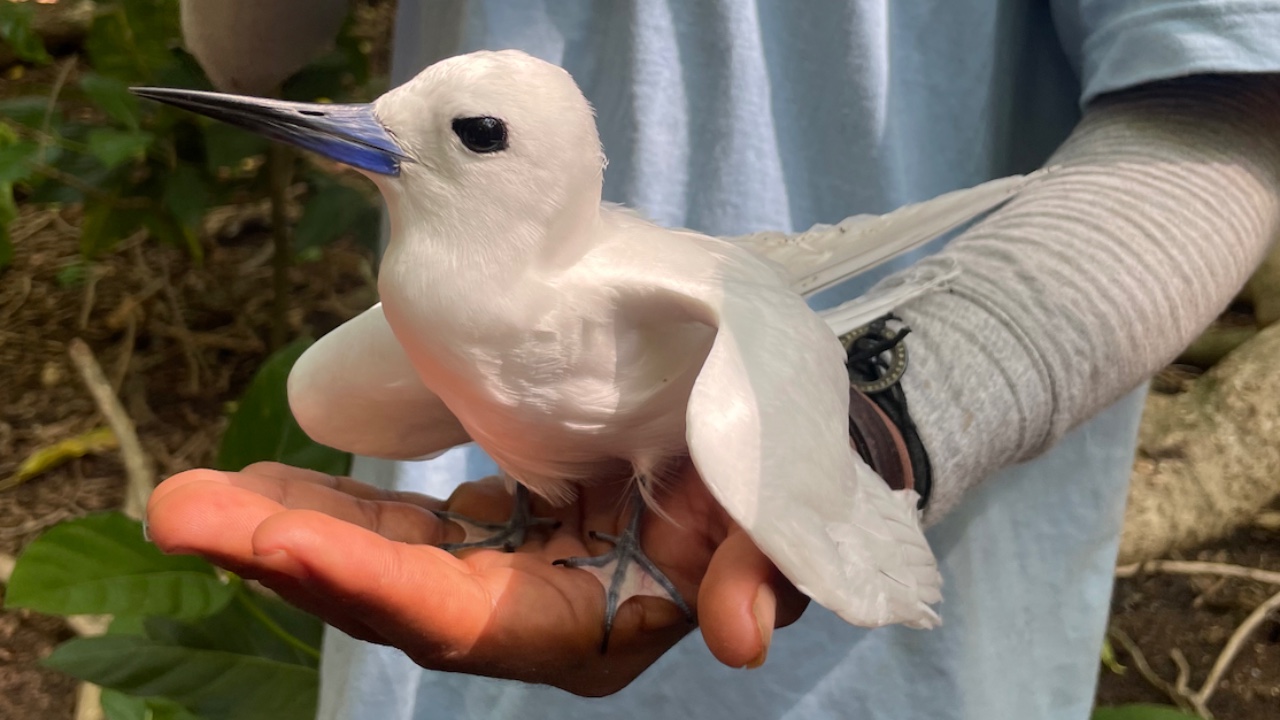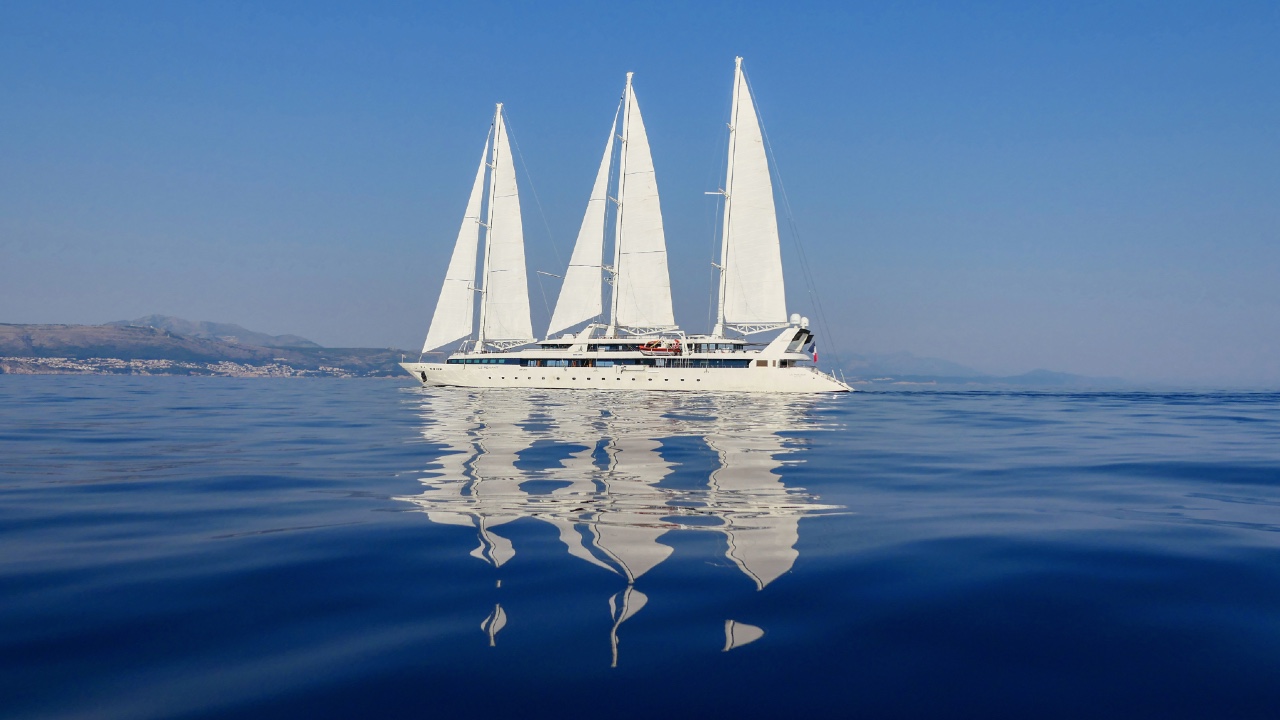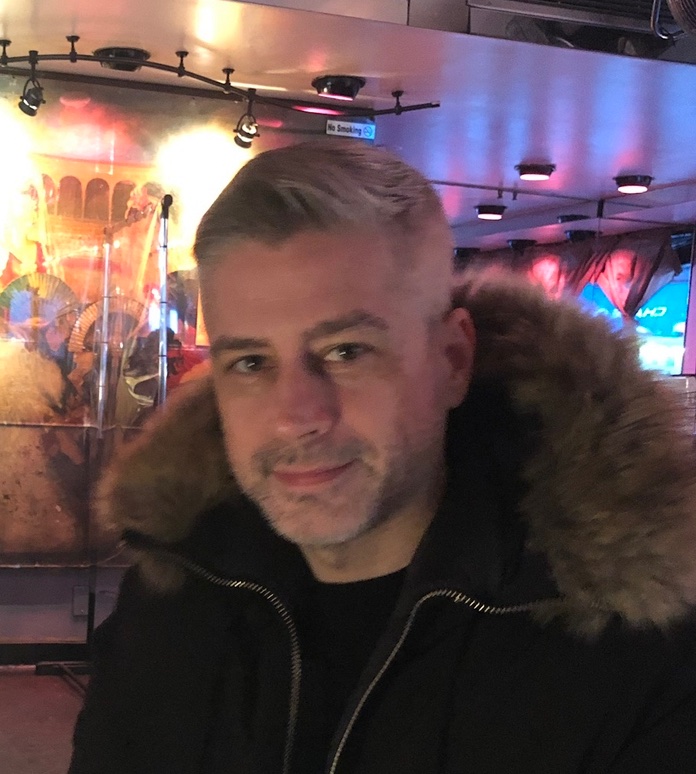

“Shark!” I spit the snorkel from my mouth and look up as an expedition leader excitedly waves in my direction from aboard a Zodiac inflatable boat that’s floating nearby. I jerk to my right, where I expect to see my freediving instructor, Francine Kreiss, motioning me to safety. Instead, she plunges forward, kicking her bladelike fins, and tells me to follow. If she’s not terrified, I think, then I have nothing to fear either. I find out later that she has a soft spot for sharks — of all temperaments — but the whale shark that swam by to greet us wasn’t dangerous. I’m thrilled to have caught at least a fleeting glimpse of the hulking filter feeder through my fogged-up mask.
Just moments earlier, with the glistening Indian Ocean as our classroom, Kreiss had taught me the techniques of freediving, which requires nothing more than a snorkel, mask and fins. “Relax and breathe,” Kreiss advised me as I floated facedown. Taking in a lungful of air through my snorkel, I learned to jackknife at the waist and plunge vertically downward. Each time I dive, I take an upside-down look around the sandy ocean floor below me where, it turns out, that whale shark had been skulking around earlier like a moody teenager — which it probably was, judging from its size, Kreiss says. I beam when she compliments my form after I perfect my final dive, reaching a depth of around six meters, or nearly 20 feet. I then make the enthusiastic-amateur mistake of asking the adventurer her best dive to date. Unsurprisingly, it turns out that my piddly plunge doesn’t really measure up to what the pros can do — her record dive is an impressive 50 meters, or roughly 165 feet.

Snorkeling back to the picture-perfect shore, a tropical paradise of enormous palm trees and blindingly white sand, I watch from the clear water’s surface as Kreiss suddenly descends and points out the form of a giant stingray whose massive body blends into the ocean’s depths. I just as quickly find myself in a technicolor rave filled with a school of silvery trevally fish orbiting around me and neon-colored parrotfish flashing about like confetti tossed amongst the coral.
Welcome to the Seychelles. This excursion is one of many on offer during my aquatic adventure exploring several of the republic’s roughly 115 islands — there are 41 inner granitic and many of the rest are more remote outer coral islands — scattered around roughly 540,000 square miles off the eastern coast of Africa. A mere finless mammal, my spectacular mode of transportation while I’m here, Le Ponant, is a three-masted yacht sailing under the French flag with the luxury cruise company PONANT.

A day after my shark encounter, we anchor off the palm-fringed beaches of Aride. From the deck of Le Ponant, I watch white terns and other tropical birds slice, swoop and speed across the cornflower blue skies above the island. If the previous day was about exploring aquatic wildlife, today was clearly for the birds. Once onshore, Island Conservation Society guide Julio Confiance tells me there are no natural predators on this special island that’s the most important bird reserve in the Seychelles and home to more than half a million birds. His advice: Don’t look up with an open mouth!
We slowly weave our way along a path through the dense jungle of this former coco plantation now kept completely off limits to any visitors for six months a year. Endemic species, including the midnight- blue and rare Seychelles magpie-robin, prefer to pursue their passions in peace. Coppery Wright’s skinks, a species of lizard, come out to greet me and dart around underfoot. I steer clear of a giant (but harmless) spider that Confiance breezily plucks from its web to show us. The arachnid’s long black and caramel legs stretch the length of the guide’s fingers.

I step in closer when Confiance notices a tern that at first appears to be nesting in the dirt but is actually grounded and unable to fly. He shows us how the bird’s feathers have become glued together with a sticky seed from the pisonia plant — sometimes known as birdcatcher trees — that collects on birds’ wings when brushed against. I notice that the tiny barbed seeds are even clinging to my shoelaces. We work together to gently pull the seeds entangled with the bird’s feathers. When the tern’s free enough to flap its wings, the bird takes a moment to rest in Confiance’s hand — as if to express its gratitude before flying off. The moment is a perfect example of the rare symbiosis between nature and humans that exist on these islands.

Wildlife is everywhere you look in the Seychelles and it’s a rare experience to meet so many animals unafraid to commingle with humans. I feed an ornery 80-year-old giant tortoise affectionately known as T-Rex that happens to lumber by (the animals are full of character and almost impossible not to encounter in the Seychelles). Confiance, meanwhile, shares a little bit about what it’s like temporarily living with a handful of conservationists on the otherwise uninhabited island. They play music, talk and share rum late into the quiet evenings. But I found out they are often not the only inebriated ones on the island: The birds and bats on Aride occasionally overindulge on a fig-like fruit that gets them drunk. While they usually sleep it off, some occasionally fall from trees after tying on one too many. Confiance recalls how he once found a Seychelles blue pigeon that was so drunk he needed to nurse it back to health for two days before it sobered up enough to take flight.
After several island stops around the Seychelles, a pod of dolphins and a few flying fish welcome us as we reach the Outer Islands and African Banks, two tiny uninhabited islets discovered in 1797 on the edge of the Amirante Bank. Its small scale somehow feels expansive. I travel ashore with my yacht mates and we make ourselves at home on the velvety and pristine white sands of the flat coastline that just barely peeks above the water and only at low tide.

“The African Banks is a pure example of climate change, because before it was bigger,” PONANT expedition leader Jakawan Hoareau tells me. Hoareau began working in conservation in the Seychelles in 2009, and he explains that some islands he visited as part of the job didn’t exist when he returned years later. “It is very alarming.”
I meander the shoreline — a mere 15-minute round trip. Though the African Banks feels a million miles away from civilization, as I walk along the beach, I spot a single shoe that’s washed ashore and now lays shipwrecked in the sand. I later see it on the deck of the yacht, and crewmembers tells me they try to collect as much debris as possible. PONANT was established by sailors, and preservation of the marine ecosystem is a priority for the company. The PONANT Foundation, founded in 2019, works with local communities and scientists, and one of the first projects it supported was the clean-up of the Aldabra Atoll.

Fine weather and calm seas are never a promise on a cruise, and as our sailing trip continues, a tropical depression with southerly winds moves in and the skies grow dark. Our time on the most remote location we’ll visit on the itinerary, Bijoutier Island, is cut short, creating the perfect opportunity to explore the five decks of the 288-foot Le Ponant. The recently renovated yacht is intimate (it can accommodate up to 32 guests in 16 staterooms and suites), and the Alizés deck is undoubtedly the heart of the vessel. Bathed in soothing white, cream and navy blue, the glowing Emeraude Lounge is the ideal place to grab a cocktail — or two — and kick back to watch the ocean and islands slowly slide by.

There’s also an outdoor marina deck for lounging around or basking in the sun as well as a smaller lounge, gym and spa. I’m already familiar with the mid- level Zéphyr Deck, where mesmerizing views are served up with breakfast, lunch and dinner either in the intimate indoor restaurant, Le Diamant, or on the adjacent outdoor dining area. Perhaps the most stunning discovery I make is the Sun Deck on the very top of the yacht. On brighter days, guests can laze about on beds while sipping champagne served from the deck’s bar and drinking in 360-degree views of the sparkling sea, an amazing experience when the boat is traveling at 10 knots, powered by five majestic white sails towering overhead.

Reaching the end of the cruise, the captain steers the yacht back toward the main island, Mahé. Suddenly clear skies allow for a final day of water sports and we head to the nearby Thérèse Island for our last scuba diving, snorkeling and swimming in the blue-green water that shimmers like tourmaline in the African sun. At the end of the afternoon, I’m walking along the beach with another passenger so we can board Le Ponant one last time, and we both grow quiet as we watch bits of coral lodged in the sand loosen and disappear into the surf. “The great thing about the trip’s memories,” she says, breaking the silence, “is that nobody can take them away.”
Although our time was coming to an end, it was evident the Seychelles had allowed me to experience the world through a new lens — my eyes (and mind) now wide open.

Read GRAZIA USA’s Spring issue featuring cover star Lucy Boynton:














